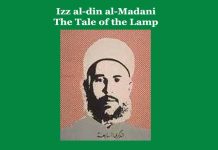Natarajan | The Co-death | An Analytical Study
Natarajan | The Co-death | An Analytical Study
Natarajan | The Co-death | An Analytical Study
The Co-death (Shah-maran) is a Bengali short story written by Natarajan. The sufferance of the mother-in-law in the hand of the daughters-in-law is the main theme of the story.
The story is about an old woman named Charushila Devi, the wife of Zamini Goshal. She lost her husband about sixteen years ago. One day she was gazing at the photo of her dead husband, which was kept hanging on the wall, and was thinking about him. It seemed that he had died some days ago. Beside the photo of her husband, there was a photo of Raja Rammohan Roy. She had heard of Raja Rammohan Roy from her grandmother while she was a child. Her grandmother told her that Raja Rammohan Roy was a great personality of India who tried to remove the Satidah Pratha from society. She, at such a tender age, realized that it was blind faith and very inhuman. But what she thought to be cruel and inhuman in her childhood, now in her old age happened to realize that it was an act of virtue and Raja Rammohan Roy did injustice to the widows by removing the Sati-dah Pratha. It was because she faced cruel and ill-treatment from her daughter-in-law, Amrita (the wife of her second son, Bishnu Kanta). Her daughter-in-law and the grandchild Shutki often chided her and insulted her. She thought that had she been sent to the pyre of her dead husband and died with him it would have been a relief for her from such insulting treatment. Then she began to honour the Sati-dah Pratha in her heart and one day she died by pouring kerosene on her body.
The story is a tragic one as Charushila Devi suffers a lot at the hands of her daughter-in-law and grandchild Shutki. The readers’ sympathy goes with Charushila Devi.
There are three characters in the story. The first is Charushila Devi. She is the main character of the story. She is portrayed as a type of Bengali widows. In the Indian Hindu society, the widows have to suffer a lot at the hands of their family members and even from society. The widow old women often become the victim of the ill-treatment of their daughters-in-law. They have to observe many rituals which prevent them from enjoying the general comforts of life. Charushila Devi in the story represents them all. She, being unable to bear such inhuman insults, died by pouring kerosene oil on her body. Likewise, Amrita is the representative of the modern daughters-in-law in Indian society. She also leaves no stone unturned to find fault with her mother-in-law. Shutki is also a type of modern girl who finds a clue to insult and harass her old grandmother.
In narrating the story the author has employed the Objective Method. In this method, the author becomes a character of his story and writes his story in the first person.
The story, in Structure, may be called a good one though the proper stages of its structure are not apparently visible. The climax of the story reaches when Charushila Devi heard about the Sati-dah Pratha of Hindu society in the mouth of her grandmother in her childhood and opined that the custom was a vice.
The Setting of the story is consistent with the events and situation.
The Dialogue employed in the story is very logical as he uses them sparingly but all the dialogues have taken his story ahead and revealed the inner nature and motives of his characters.
The Philosophy of Life is also found in the story. The author has expressed through the story that human mentality changes with the change of circumstances.
The Language of the story is very simple as it is characterized by the use of concrete and formal (not unfamiliar) words and phrases and it is free from poetic imagery and emotional expression.
All the Qualities of a good short story as —unity of purpose, brevity, spontaneity and universality are present in this short story. The brevity which is taken of as the soul of a short story is also maintained throughout the story as all the component elements of a good short story are employed in the story with the possible economy.
The story is ideal in Length— neither very short nor long.
As all the component elements and the qualities of a good short story are present in the story so it may be called that it belongs to the story of first grade. 0 0 0.
Natarajan | The Co-death | An Analytical Study
Read More: Leo Tolstoy’s The Imp and the Peasant’s Bread-Analytical Study
N. B. This article entitled ‘Natarajan | The Co-death | An Analytical Study’ originally belongs to the book ‘World Short Story Criticism‘ by Menonim Menonimus. Natarajan | The Co-death | An Analytical Study
Books of Literary Criticism by M. Menonimus:
- World Short Story Criticism
- World Poetry Criticism
- World Drama Criticism
- World Novel Criticism
- World Essay Criticism
- Indian English Poetry Criticism
- Indian English Poets and Poetry Chief Features
- Emily Dickinson’s Poetry-A Thematic Study
- Walt Whitman’s Poetry-A Thematic Study
- Critical Essays on English Poetry
- Tawfiq al-Hakim’s Novel: Return of the Spirit-An Analytical Study
- Tawfiq al-Hakim’s Novel: ‘Yawmiyyat Naib Fil Arayaf’-An Analytical Study
- Analytical Studies of Some Arabic Short Stories
- A Brief History of Arabic Literature: Pre-Islamic Period …
Books on Linguistics by M. Menonimus:
- A Brief History of the English Language
- Essays on Linguistics
- My Imageries
- Felicitous Expression: Some Examples
- Learners’ English Dictionary
Related Searches:
- Short Stroy Criticism
- The Indian English Short Story
- Individual and Society …
- ‘Deliverance’ by Premchand Analysis
- Summary of Rabindranath Tagore’s ‘The Exercise Book
- Exercise Book
- The Cabuliwallah
- Atulananda Goswami Biogrpahy
- Lord Halifax’s Ghost Books
- Lord Halifax
- Bimal Mitra
- Bimal Mitra-IMDb
- What Really Happened
- Books of Banaphool
- Post-Googlism and Other Stories
- T Natarajan …











